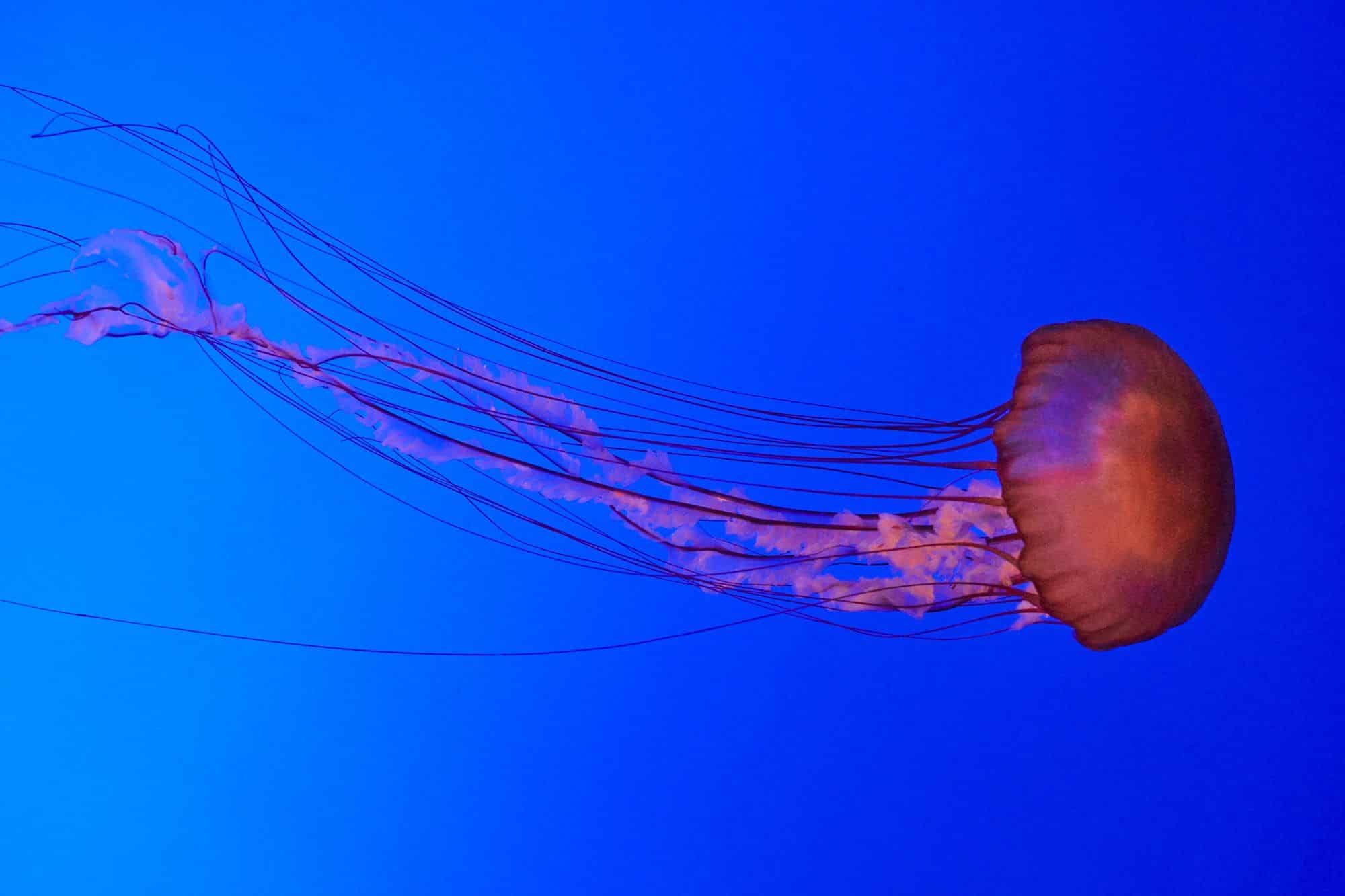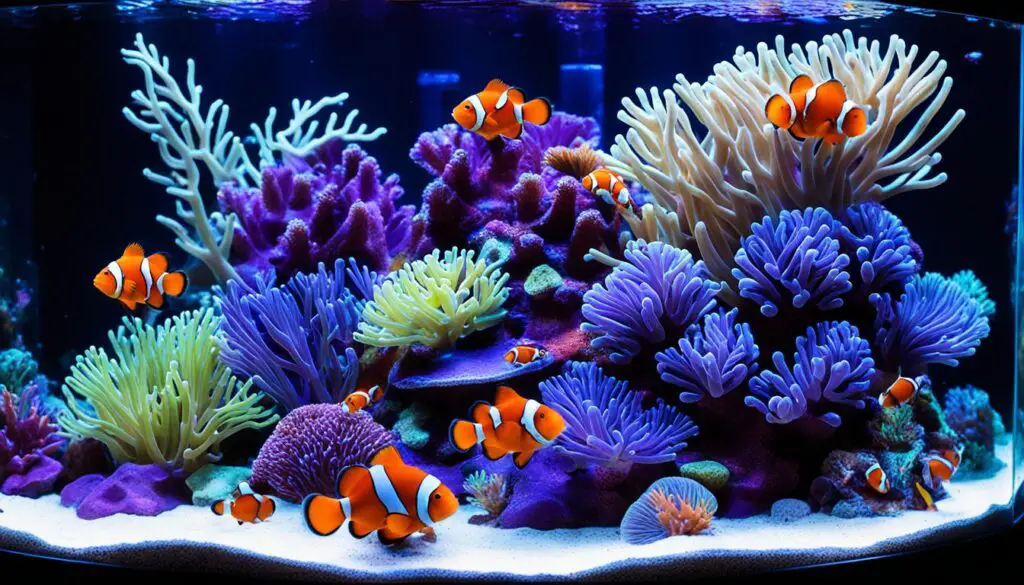How Do Jellyfish Communicate

Introduction
How Do Jellyfish Communicate: The question of how jellyfish communicate opens a window into the fascinating world of these ancient and enigmatic marine creatures. Jellyfish, belonging to the phylum Cnidaria, have captivated scientists and marine aquarium enthusiasts for centuries with their ethereal appearances and intricate biology. While they lack the complex nervous systems and vocalizations found in many other animals, their interactions with each other and the environment reveal unique and intriguing forms of communication.
Jellyfish are renowned for their gelatinous bodies and graceful movements, propelled by pulsating bell-shaped structures. Their communication methods, although not driven by conscious intent or language, are essential for their survival and reproduction. In this exploration, we will delve into the ways in which jellyfish perceive their world, respond to stimuli, and navigate their underwater domains. We will discover that their communication is a symphony of instinctual behaviors, sensory adaptations, and environmental responses, all contributing to their remarkable ability to thrive in the dynamic and mysterious world beneath the waves.
Jellyfish do not communicate in the conventional sense that humans or some animals do, yet their interactions are far from silent. This exploration will take us into the depths of the ocean, where these mesmerizing creatures rely on instinctual behaviors, sensory adaptations, and environmental cues to navigate their world. We will delve into their responses to touch, vibrations, and changes in their surroundings, shedding light on their unique and often surprising methods of communication. While they may not engage in verbal exchanges or display the complex social behaviors of more advanced species, jellyfish reveal the elegance of life’s adaptability and the subtlety of communication within the mesmerizing dance of the world’s oceans.

How do jellyfish communicate?
Instead of a single, centralized brain, jellyfish possess a bodywide network of nerves that communicate with each other, allowing them to detect touch, temperature, salinity, and more.
Jellyfish communicate through a series of simple, instinctual behaviors and responses to their surroundings, but they do not engage in sophisticated communication as many other animals do. Unlike species with well-developed nervous systems and vocalizations, jellyfish lack centralized brains or complex sensory organs. Instead, they primarily rely on physical interactions and reactions to environmental cues. For example, when a jellyfish comes into contact with an obstacle or potential prey, it may exhibit a reflexive response by retracting its tentacles or altering its swimming direction.
Jellyfish may respond to changes in water temperature, light levels, or ocean currents, which can influence their movement patterns. While these behaviors allow jellyfish to navigate their aquatic environments and interact with their surroundings, they do not constitute a form of communication in the way humans or more complex organisms understand it. Jellyfish exist in a world of instinctual responses and environmental feedback, rather than intentional communication with one another.
Jellyfish’s lack of complex communication is due to their relatively simple physiology and nervous system. Unlike animals with more advanced capabilities for communication, jellyfish don’t have specialized organs or mechanisms for conveying information to one another. Their interactions are primarily governed by instinctual responses to external stimuli, which allow them to navigate their surroundings and fulfill their basic biological needs, such as feeding and avoiding predators.
How do jellyfish interact with other jellyfish?
Communication: Some species of jellyfish are known to communicate with others of their kind by means of chemicals. If communication exists between Moon jellyfish, it is likely by the same method. Reproduction: Male Moon jellyfish release sperm that are taken internally by the female for fertilization.
Jellyfish interactions with one another are typically characterized by simple, instinctual behaviors rather than complex forms of communication or social interactions. Most jellyfish species are solitary creatures and don’t engage in social behaviors like schooling or cooperative hunting. Their interactions are often related to matters of survival and reproduction. In situations where jellyfish do encounter each other, they may exhibit avoidance behaviors to prevent physical contact, as some species’ tentacles can sting and harm each other.
When it comes to mating, male jellyfish release sperm into the water, and females release eggs, relying on chance encounters for fertilization to occur. Jellyfish aggregations or swarms, when they occur, are usually a response to environmental factors like changes in water temperature or food availability, rather than intentional social interactions. Overall, the interactions between jellyfish themselves are relatively basic and driven by individual instincts and environmental cues.
Jellyfish interactions primarily revolve around two key aspects of their life: survival and reproduction. While they are solitary creatures for most of their lives, they may encounter other jellyfish in various contexts:
Avoidance and Defense: When jellyfish come into contact with one another, they often exhibit avoidance behaviors to prevent physical interactions. This is because many jellyfish have stinging tentacles that can harm not only prey but also other jellyfish. Contact avoidance helps them minimize the risk of injury.
Reproduction: One of the few instances where jellyfish interact more directly is during reproduction. Male jellyfish release sperm into the water, while females release eggs. Fertilization occurs when these gametes encounter each other by chance. Some species may also engage in a courtship dance before releasing gametes to increase the chances of successful fertilization.
How do jellyfish hear sound?
A jelly’s ability to sense the world is due in large part to specialized sensory structures, that sort of combine the eye, middle ear, cerebellum, and possibly the nose, all in one place. These little structures hang from the bell margins like earrings, and are called “rhopalia”.
Jellyfish, unlike some marine animals with specialized auditory structures, do not possess ears or hearing organs in the conventional sense. They lack the complex auditory systems found in mammals or fish. Instead, jellyfish primarily rely on their tactile and sensory responses to their underwater environment. They are equipped with a network of specialized cells called “cnidocytes” distributed across their tentacles, which are responsible for their distinctive stinging mechanism. These cnidocytes can detect subtle changes in water movement and pressure caused by the movements of potential prey or obstacles in their vicinity.
While this sensory system allows jellyfish to perceive and respond to their immediate surroundings, it is not used for hearing sounds in the way humans or other animals do. Therefore, jellyfish are more attuned to tactile stimuli, vibrations, and changes in water flow, rather than auditory cues, as their primary means of sensing and interacting with their underwater world.
Jellyfish primarily rely on their tactile and sensory responses to their underwater environment, but they do not have the capability to hear sounds in the way humans or some other marine animals do. Their sensory system is adapted for detecting changes in water movement and pressure, which they use for hunting, navigation, and avoiding obstacles. While they can perceive vibrations and disturbances in the water caused by the movements of potential prey or other objects, this sensory mechanism does not involve hearing sounds in the conventional sense.
How do jellyfish know to stay together?
For the most part, jellyfish only group together when they are moving in the same direction or following the same food source. Jellyfish do not have social behavior. And their groupings are primarily due to converging water currents. These creatures don’t have brains.
Jellyfish often form aggregations or groups in response to environmental cues rather than through intentional social behaviors. These aggregations are not a result of jellyfish consciously deciding to stay together but rather a collective response to shared environmental conditions. Factors such as changes in water temperature, salinity, and food availability play a significant role in prompting jellyfish to gather in groups. When conditions are favorable, such as an abundance of planktonic prey or optimal water temperatures, individual jellyfish may congregate in the same area to take advantage of these resources.
Conversely, when environmental conditions become less favorable, such as during unfavorable temperatures or reduced food availability, jellyfish may disperse or migrate to more suitable locations. In essence, jellyfish group together as a survival strategy, responding instinctively to changes in their surroundings rather than through social interactions or communication with one another.
Jellyfish tend to stay together or form aggregations due to a combination of environmental factors and individual responses rather than intentional social behaviors. While they lack complex social interactions, some key factors influence their tendency to aggregate.
How intelligent are jellyfish?
Jellyfish are more advanced than once thought. A new study from the University of Copenhagen has demonstrated that Caribbean box jellyfish can learn at a much more complex level than ever imagined – despite only having one thousand nerve cells and no centralized brain.
Jellyfish are not considered intelligent in the conventional sense, as they lack complex nervous systems and the cognitive abilities associated with higher-order thinking. They belong to the phylum Cnidaria, which includes relatively simple organisms in terms of neural development. However, intelligence is a multifaceted concept, and while jellyfish may not exhibit behaviors associated with advanced problem-solving or learning, they display remarkable adaptability and sophistication within their ecological niches.
They have evolved a range of survival strategies, including their unique propulsion mechanisms, responses to environmental cues, and efficient methods of prey capture. Some species, like the box jellyfish, have more advanced behaviors, such as agile hunting and predator avoidance. While these behaviors are instinctual and not driven by conscious decision-making, they are well-suited to their roles as predators or drifters in the ocean. In essence, jellyfish exemplify a different form of intelligence adapted to their environment, allowing them to thrive in the complex and ever-changing world of the ocean.
Jellyfish have evolved various mechanisms for survival and navigation, such as the pulsating bell propulsion for swimming, sensitivity to environmental cues like changes in water temperature and light levels, and effective prey capture techniques. Some species, like box jellyfish, display more advanced behaviors, including agile hunting and predator avoidance, showcasing their ability to respond to complex stimuli. While their intelligence is limited compared to higher-order animals, jellyfish’s unique adaptations and responses to their surroundings demonstrate a specialized form of intelligence that enables them to thrive in the dynamic and competitive marine ecosystems they inhabit.
How do jellyfish hear?
The large nerve net includes rhopalia, finger‐like structures on the edge of the jellyfish’s bell. These contain crystals that give jellies a sense of up and down, much like those in our inner ear, and a small pigment spot that may sense light, chemicals, or some combination of the two.
Jellyfish, unlike animals with specialized auditory organs like ears, do not possess the ability to hear in the conventional sense. They lack auditory structures or sensory organs designed for perceiving sound waves. Instead, jellyfish primarily rely on a combination of tactile and sensory responses to their aquatic environment. They possess specialized cells called cnidocytes, distributed across their tentacles, which are primarily responsible for their stinging mechanism. These cnidocytes can detect subtle changes in water movement and pressure caused by the movements of potential prey or obstacles nearby.
The sensory system allows jellyfish to perceive vibrations and disturbances in the water, it does not constitute hearing as we understand it. Jellyfish are more attuned to physical stimuli, such as changes in water flow or contact with other objects, and they use these responses for navigation, hunting, and avoiding obstacles rather than hearing sounds as a means of communication or perception. Jellyfish do not possess specialized organs for hearing, and their sensory capabilities are primarily focused on detecting changes in water movement and pressure, rather than sound as humans perceive it.
They have specialized cells called cnidocytes located in their tentacles, which are responsible for their stinging mechanism and are sensitive to disturbances in the water caused by the movements of potential prey or objects. When a jellyfish’s tentacles come into contact with something that triggers these cnidocytes, it initiates a rapid response to capture prey or deter potential threats.
While this sensory system allows jellyfish to perceive vibrations and changes in water flow, it does not translate into a capacity to hear sounds in the way animals with dedicated auditory structures do. In essence, jellyfish more on their tactile and environmental sensitivity rather than hearing for their survival and interactions in the underwater world.
How do jellyfish know where to go?
Instead of a brain, jellyfish have an elementary nervous system with receptors that detect light, vibrations, and chemicals in the water. Along with the ability to sense gravity, these capabilities allow the jellyfish to navigate.
Jellyfish navigate their aquatic environment primarily through instinctual responses to sensory cues and environmental factors. While they lack complex brains or advanced cognitive abilities, they exhibit remarkable adaptability and efficiency within their ecological niches. One of the key factors guiding their movements is their sensitivity to changes in water temperature, light levels, and water currents. Jellyfish often adjust their positions in response to these cues, aiming to stay within their preferred environmental conditions. They are also attuned to variations in water flow and turbulence, which can affect their movement patterns.
Some species, like the box jellyfish, are known for their agility and can actively swim to pursue prey or escape threats. Additionally, jellyfish may follow the abundance of planktonic prey, tracking their movements to find food. While these behaviors are instinctual rather than consciously directed, they showcase the adaptability of jellyfish to respond to their surroundings and make the most of their simple but effective sensory and locomotive systems.
Jellyfish on a combination of sensory cues and instinctual responses to navigate their underwater world. While they do not possess complex brains or advanced cognitive abilities, they have evolved several mechanisms to determine where to go:
Do jellyfish communicate with each other?
No, jellyfish do not communicate in the way humans or many other animals do. They lack a centralized nervous system or complex sensory organs for communication. Instead, they primarily rely on instinctual behaviors and responses to environmental cues.
Jellyfish do not communicate with each other in the way humans or more complex animals do. They lack the complex sensory and neural structures necessary for sophisticated forms of communication. Instead, their interactions with the world and other jellyfish are primarily driven by instinctual behaviors and responses to environmental cues. Jellyfish may respond to changes in water temperature, light levels, or the presence of food in their vicinity. While they can sense and react to physical stimuli, their responses are generally limited to basic behaviors such as avoiding obstacles, capturing prey, or retreating from threats.
In situations where jellyfish encounter each other, they may exhibit avoidance behaviors to prevent physical contact, especially since many species possess stinging tentacles that can harm not only prey but also other jellyfish. While these interactions serve their survival and reproductive needs, they do not constitute a form of intentional or complex communication among jellyfish themselves.While they are fascinating organisms with unique adaptations, their communication abilities are relatively basic and centered on their immediate physical responses to the underwater world.
Jellyfish primarily rely on instinctual responses to their environment and do not engage in complex or intentional communication with each other. Their interactions are driven by simple behaviors related to survival and reproduction. When jellyfish encounter one another, they may exhibit avoidance behaviors to prevent physical contact, as many species have stinging tentacles that can cause harm. In terms of reproduction, male and female jellyfish release their gametes (sperm and eggs) into the water, where fertilization occurs by chance encounters rather than through any form of courtship or communication. Jellyfish do not produce sounds or engage in vocalizations like some other marine creatures, and they lack the anatomical structures for advanced communication.

Conclusion
In the depths of the ocean, where simplicity meets efficiency, we have unraveled the intriguing question of how jellyfish communicate. While they lack the complex vocalizations or intricate social behaviors seen in more advanced species, jellyfish possess a unique and elegant form of communication suited to their enigmatic world. Their interactions with the environment, each other, and the intricate web of life beneath the waves are orchestrated through instinctual behaviors, sensory adaptations, and responses to environmental cues.
From their sensitivity to touch and vibrations to their instinctual reactions to changes in temperature, light, and water currents, jellyfish navigate their aquatic realm with a symphony of responses. While their communication may not be conscious or intentional, it is nonetheless effective, allowing them to fulfill their essential roles in marine ecosystems.
In this exploration, we have witnessed the subtle beauty of jellyfish communication, a testament to life’s adaptability and the countless ways in which creatures adapt to their surroundings. The world of jellyfish, where simplicity and elegance converge, continues to inspire awe and wonder, reminding us of the boundless diversity and complexity of life on our planet.



